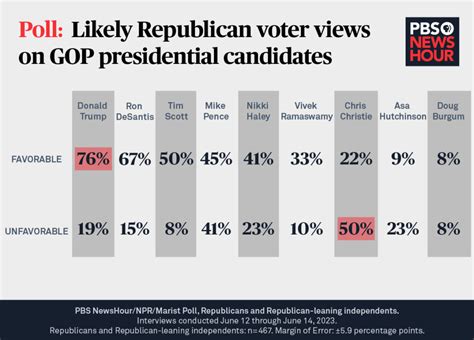Discover essential baseball metrics, their significance, and how to leverage player statistics for enhanced performance insights and fan engagement.Baseball has long been celebrated not just as a game of skill and strategy, but also as a sport deeply rooted in statistics. With the advent of advanced analytics, an entirely new language of metrics has emerged, transforming the way fans, players, and teams engage with the game. In “A Beginner’s Guide to Understanding Baseball Metrics,” we aim to demystify these essential figures that not only enhance appreciation for the sport but also revolutionize player evaluation and team strategy. Whether you’re a casual observer or an aspiring statistician, this guide will break down the fundamentals, provide insight into key terms, and explore how metrics can elevate your experience. Join us as we delve into the numbers that truly matter in America’s pastime.
What Are Baseball Metrics and Why They Matter
Understanding baseball metrics is essential for anyone interested in the game’s intricacies, whether you’re a player, coach, analyst, or fan. Baseball metrics are quantitative measures that help evaluate player performance, team success, and game outcomes. They offer insights beyond traditional statistics, enabling deeper analysis of gameplay and strategy.
The evolution of baseball metrics has been driven by advancements in technology and data analysis, allowing for a more comprehensive view of a player’s capabilities. Metrics such as On-Base Percentage (OBP), Wins Above Replacement (WAR), and Earned Run Average (ERA) are just a few examples that provide a clearer picture of a player’s contribution to their team.
By adopting a metric-based approach, teams can make informed decisions regarding player acquisitions, strategy development, and game management. Moreover, fans can engage with the game on a deeper level, enhancing their understanding and enjoyment. In today’s competitive environment, the importance of understanding baseball metrics cannot be overstated, as they play a crucial role in shaping the future of the sport.
Key Inputs: Player Statistics and Game Data Overview
To truly grasp understanding baseball metrics, it’s essential to recognize the key inputs that contribute to these analytical tools. Metrics are derived from a wealth of player statistics and game data that provide insight into on-field performance. Let’s explore some of the primary data points that serve as the foundation for understanding these metrics.
- Batting Average (AVG): This metric indicates a player’s hitting effectiveness, calculated by dividing the number of hits by the number of at-bats. A higher average signifies better hitting performance.
- On-Base Percentage (OBP): OBP measures how often a player reaches base (via hits, walks, and hit-by-pitches) compared to their total plate appearances. It suggests overall offensive contributions beyond just hitting.
- Slugging Percentage (SLG): This statistic quantifies a player’s power by calculating total bases per at-bat. SLG goes beyond batting average by incorporating extra-base hits.
- Wins Above Replacement (WAR): WAR estimates a player’s overall value to their team in terms of wins compared to a replacement player. This comprehensive metric takes offense, defense, and base running into account.
- ERA (Earned Run Average): For pitchers, ERA is crucial. It measures a pitcher’s effectiveness by calculating the number of earned runs allowed per nine innings pitched, providing a clear view of their performance on the mound.
- WHIP (Walks plus Hits per Innings Pitched): WHIP evaluates a pitcher’s ability to prevent batters from reaching base by adding walks and hits and dividing by innings pitched.
These statistics, among others, create a robust framework for assessing player performance and contribute significantly to understanding baseball metrics. By analyzing this data, teams and fans gain deeper insights into the game, enhancing their appreciation of player capabilities and strategies.
Developing Insights: Analyzing Performance Through Metrics
Analyzing performance through metrics is an essential part of understanding baseball metrics, as it provides valuable insights into player contributions and team dynamics. By leveraging various statistical measures, teams and analysts can identify strengths and weaknesses in player performance, which can inform strategic decisions both on and off the field.
One significant aspect of analyzing performance is the distinction between traditional statistics and advanced metrics. Traditional statistics, such as batting average and earned run average (ERA), provide a basic overview of player performance. However, advanced metrics like WAR (Wins Above Replacement) or OPS (On-base Plus Slugging) offer a deeper understanding of a player’s overall impact on the game.
For instance, understanding baseball metrics like launch angle and exit velocity allows teams to assess a player’s hitting mechanics and potential for power. These metrics, combined with pitch tracking technology, can also help analyze pitchers’ effectiveness by evaluating how batters react to different pitching styles.
Moreover, when analyzing team performance, metrics such as defensive runs saved (DRS) or team batting average highlight overall trends within a squad. This information can guide coaching decisions and optimize game strategies based on the strengths and weaknesses of the roster.
The development of insights through performance analysis via metrics is vital for teams aiming to enhance their competitiveness. As the landscape of baseball continues to evolve, embracing comprehensive metrics will empower teams and fans alike to appreciate the intricacies of the game more fully.
Understanding Baseball Metrics: Common Terms You Should Know
To truly grasp the concept of understanding baseball metrics, it’s essential to familiarize yourself with the common terminology used in the field. Here’s a breakdown of key terms and their meanings:
| Term | Description |
|---|---|
| OPS | On-base Plus Slugging; a statistic that combines a player’s on-base percentage and slugging percentage to provide a comprehensive view of their offensive performance. |
| WAR | Wins Above Replacement; a metric that estimates how many wins a player contributes to their team compared to a replacement-level player. |
| ERA | Earned Run Average; a statistic that measures a pitcher’s effectiveness by calculating the average number of earned runs they allow per nine innings pitched. |
| WHIP | Walks and Hits Per Inning Pitched; a metric that quantifies a pitcher’s ability to prevent batters from reaching base. |
| FIP | Fielding Independent Pitching; a statistic that evaluates a pitcher’s effectiveness based solely on outcomes they can control. |
| BABIP | Batting Average on Balls In Play; a statistic that measures a player’s success rate on balls hit into the field of play, excluding home runs. |
| SLG | Slugging Percentage; a measure of a player’s power-hitting ability, calculated as total bases divided by at-bats. |
| OBP | On-base Percentage; a statistic that reflects how frequently a hitter reaches base, divided by the total number of plate appearances. |
These terms represent just a fraction of the many metrics used in baseball today. Understanding these basic concepts of understanding baseball metrics can provide fans and analysts alike with valuable insights into player performance and overall game strategy.
Impact of Metrics on Player Evaluation and Team Strategy
Understanding baseball metrics has transformed the way teams evaluate players and develop strategies. Metrics provide a data-driven approach that helps in making informed decisions, leading to better team performance and long-term success.
One of the significant impacts of these metrics is on player evaluation. Traditional statistics, such as batting average or earned run average, offer limited insights into a player’s overall contribution to the team. However, metrics like Ops (On-base Plus Slugging) and WAR (Wins Above Replacement) provide a more comprehensive picture of a player’s value. Evaluators can now compare players across different positions, understanding not just how well they perform individually but how they fit into the team’s needs.
Teams increasingly rely on analytics departments to identify undervalued players in the market. By leveraging advanced metrics, teams can discover hidden talent that traditional scouting may overlook, thus optimizing their roster while saving on expenses.
In terms of strategy, understanding baseball metrics allows teams to devise game plans tailored to both their strengths and their opponents’ weaknesses. For instance, the use of defensive metrics can influence positioning and in-game decision-making. Managers can utilize this data to implement strategic shifts or alter pitching rotations based on what the metrics suggest would be most effective against a particular lineup.
Moreover, metrics play a crucial role in in-game adjustments. Coaches can refer to real-time data to evaluate player performances during matches, making it possible to modify strategies on the fly. This can include changing batting orders, defensive alignments, or even pitching changes based on matchup data derived from metrics.
understanding baseball metrics is essential for both player evaluation and team strategy. The integration of these metrics into everyday decision-making not only enhances a team’s competitiveness but also fosters a deeper appreciation for the intricacies of the game among players and fans alike.
How to Utilize Metrics for Enhanced Fan Experience
Understanding baseball metrics isn’t just beneficial for players and coaches; it can greatly enhance the overall fan experience. Fans are increasingly looking for deeper insights into the game, and the metrics provide a wealth of data that can improve how they engage with baseball. Here are several ways fans can utilize these metrics:
- Game Analysis: By accessing metrics, fans can analyze player performance more critically. They can track statistics like on-base percentage (OBP) and sluggers to garner a better understanding of how individual players influence a game’s outcome.
- Fantasy League Decisions: For fans participating in fantasy leagues, metrics can guide their player selection and trading decisions. Metrics like wins above replacement (WAR) and earned run average (ERA) are crucial for evaluating player value.
- Interactive Experiences: Many teams are now incorporating advanced metrics into their digital platforms, offering interactive features that allow fans to delve into the numbers behind their favorite players and teams. This can include live stats and in-depth breakdowns of player performance.
- Enhanced Commentary: Broadcasting teams are starting to integrate metrics into their live commentary. Fans can thus gain real-time insights that make the viewing experience more enjoyable and informative, as metrics often reveal trends and anticipated outcomes of plays.
- Community Engagement: Fans can engage in discussions and forums centered around metrics, allowing them to connect with other enthusiasts who share a passion for analytics in baseball. This kind of community can enhance the overall enjoyment and understanding of the game.
By actively utilizing these metrics, fans are not only engaging more deeply with the sport but also enhancing their overall experience with baseball. Exploring and decoding the numbers involved in the game can transform a casual fan into a savvy one who appreciates the intricate dynamics of baseball.
Frequently Asked Questions
What are baseball metrics?
Baseball metrics are statistical measurements used to assess player performance, team success, and game outcomes in baseball.
Why are metrics important in baseball?
Metrics provide a deeper understanding of player efficiency and effectiveness, enabling teams and fans to make informed decisions based on data analysis.
What is ERA and why does it matter?
ERA stands for Earned Run Average and measures a pitcher’s effectiveness by calculating the average number of earned runs allowed per nine innings pitched. It is crucial for evaluating pitching performance.
What does OBP stand for?
OBP stands for On-Base Percentage, which measures how frequently a player reaches base due to hits, walks, or hit-by-pitches. It reflects a player’s ability to get on base.
What is WAR in baseball metrics?
WAR stands for Wins Above Replacement, and it estimates the total number of games a player contributes to their team compared to a player of replacement level. It summarizes a player’s overall value.
How do advanced metrics differ from traditional statistics?
Advanced metrics provide more in-depth analysis by looking at factors like defensive performance, base running, and overall player impact, while traditional statistics focus on basic outcomes like batting average or home runs.
Can metrics predict future player performance?
While metrics can provide insights into trends and potential outcomes, they are not infallible and should be used alongside other factors, such as scouting reports and player health.









